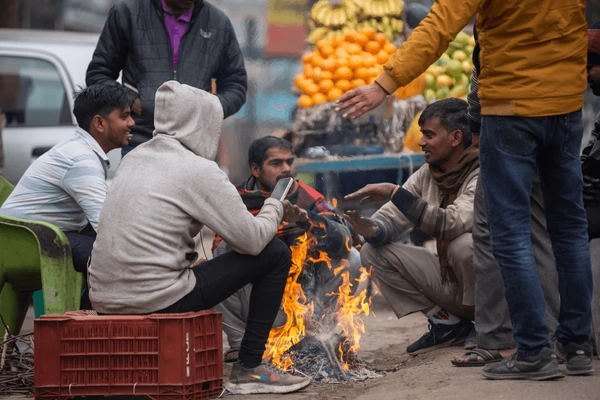Delhi experienced its coldest day of the season on Saturday, with the mercury dropping to 3.6 degrees Celsius, as dense fog enveloped various parts of the city. The India Meteorological Department (IMD) reported that this minimum temperature follows Friday’s record low of 3.9 degrees Celsius, marking the lowest in five years for the national capital.
The day’s maximum temperature is anticipated to settle around 19 degrees Celsius, as per the IMD. The Safdarjung Observatory, Delhi’s primary weather station, recorded a visibility of 200 meters at 5:30 am. The foggy conditions had a significant impact on transportation, causing delays in 18 Delhi-bound trains ranging from one to six hours.
The IMD categorizes fog based on visibility, defining very dense fog when it ranges from 0 to 50 meters, dense fog between 51 and 200 meters, moderate fog between 201 and 500 meters, and shallow fog between 501 and 1,000 meters.
Simultaneously, Delhi’s Air Quality Index (AQI) stood at 365 at 9 am, according to data from the Central Pollution Control Board (CPCB). The AQI scale ranges from zero to 500, with higher values indicating poorer air quality. An AQI between zero and 50 is considered ‘good,’ while 51 to 100 is ‘satisfactory,’ 101 to 200 is ‘moderate,’ 201 to 300 is ‘poor,’ 301 to 400 is ‘very poor,’ and 401 to 500 is ‘severe.’
The prevailing weather conditions, including the dense fog and low temperatures, impact various aspects of daily life in the city. Transportation, especially air and rail travel, faces disruptions due to reduced visibility. Additionally, residents are advised to take precautions against the cold weather, such as wearing appropriate clothing and staying indoors during extreme conditions.
It is essential for individuals to stay informed about weather updates, especially during the winter season, to plan their activities accordingly and ensure their safety and well-being. Authorities may issue advisories or warnings based on the forecast to guide the public and mitigate potential risks associated with adverse weather conditions.
